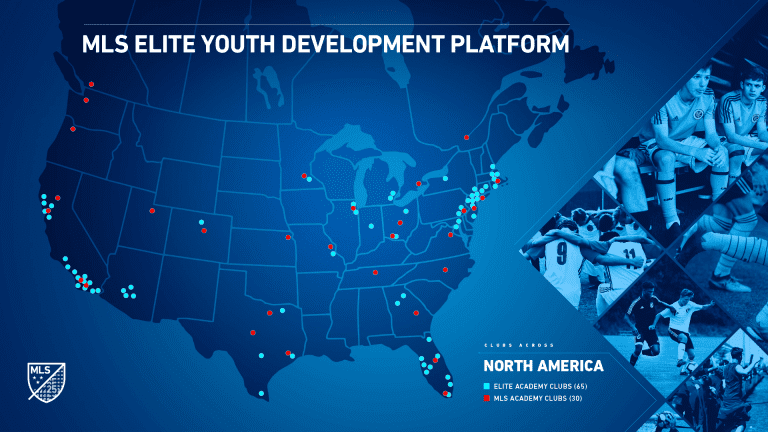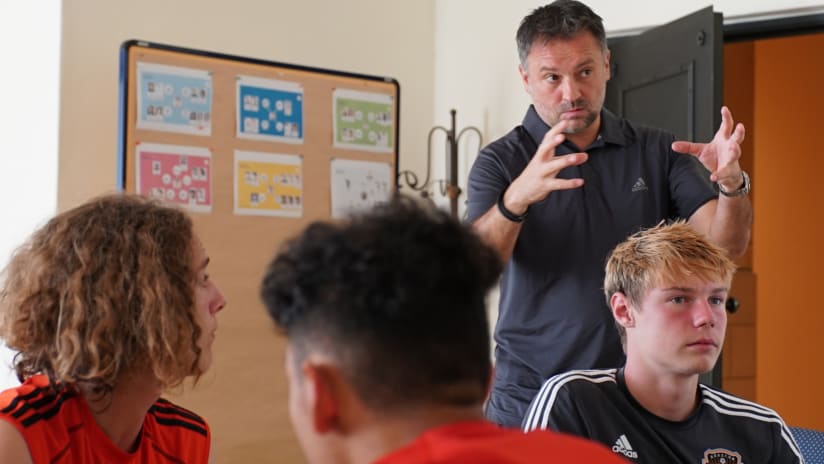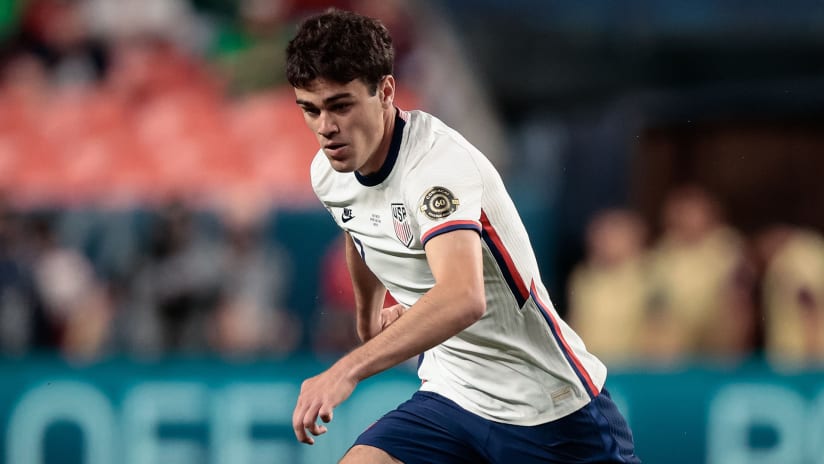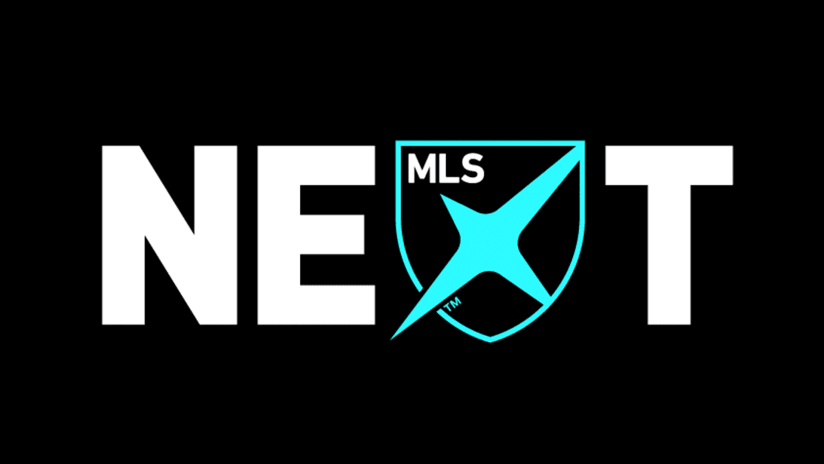If you read Wednesday’s announcement of founding members and other details of MLS’s new elite player development platform carefully, a distinct theme emerges.
Need a hint? Consider this word cloud from the release: Collaboration. Collaborative. Co-create. Conversations. Collaborate. Alongside. Inclusive.
With a centralized professional league like MLS standing up this new national competition as the successor to the U.S. Soccer Development Academy, a project of the U.S. Soccer Federation, it might sound counter-intuitive that members will have more input and a greater voice. But that’s exactly what the non-MLS clubs involved are saying loud and clear.
Did I say “non-MLS”? Scratch that – the preferred term is “elite academies,” another example of the consciously inclusive mindset at work.
“We all felt that this is a step forward, for the simple reason that the USSDA was run by the federation. This is run by professional clubs, like in the rest of the world,” said Roberto Lopez, academy director at respected Florida youth club Clearwater Chargers and a former U.S. Soccer staff member, in a conference call with media on Wednesday.
“Most important, we strongly feel that we're partners. Every meeting we have with MLS, they emphasize the need for us to bring to the table our needs. They want our experience at our level, they want to know how to go about doing things. It's very, very inclusive and we have a seat at the table. And that's why I feel that this is a major, historical step forward.”
Fueled by the coronavirus outbreak and a range of other factors, the collapse of the Development Academy unfolded along a startlingly short timeline last month, moving from hot rumor to official announcement in under a week’s time. That left many member clubs in the dark and unsure of the future, a particularly uncomfortable situation in the midst of a global viral pandemic that’s severely destabilized both the professional and youth landscapes.
So openness and stability were paramount concerns as MLS went about conceiving its new youth platform, explained Fred Lipka, the league’s Technical Director of Youth Development. That means many of the DA’s existing standards and principles will carry over, at least in the first season or two, while consultation continues on longer-term improvement and evolution.
“We had to find an environment that was going to be equal to or greater than what was the Development Academy. And I think if you look out in the landscape, there really wasn't a current league or platform that met our requirements,” said Jeffrey Saunders, sporting director at historic New York club Metropolitan Oval, an affiliate of NYCFC that’s groomed Justin Haak and a long list of other future professional players over the years.
“We worked in conjunction with the MLS leadership over the last four or five weeks to craft what a league could look like and what would be the best design to meet the goals of MLS and non-MLS clubs, as well as youth players as well as elite clubs. … in a way, we've created a bespoke professional player pathway that will facilitate quality and quantity of professional player development.”

Perhaps inevitably given it was a federation undertaking, the DA took on a top-down character over most of its 13 years of existence. That said, it’s widely agreed to have moved the North American game forward and leaves a positive legacy for its successors to build upon.
“I personally felt that it gave us the standards that we needed at the time to allow us to compete on a higher level with international teams, to develop our players,” said Lopez. “Simple things like a requirement of coaching licenses, 10-month seasons, training four times a week, not playing more than one game a day – I think that took us to another level. And I think, in my opinion, within a very short time the results were evident. And now, with this new platform coming up, I think this is going to take us a step further on what the USSDA had done.”
A perceived rift between professional and youth member clubs reportedly complicated the running of the DA in its final years. But the tenor has changed dramatically among those involved in the working groups that laid the groundwork for MLS’s new project. It’s believed clearer communication and a collaborative mentality can break down barriers and misunderstandings of the past.
“There was a lack of trust with elite academies,” Mickey Kydes, technical director at Connecticut club Beachside Soccer and an MLS player in the league’s 1996 inaugural season, told MLSsoccer.com. “There was a lack of trust and the first thing we said to [MLS] was, if we don't collaborate and we don't have a voice at the table, we can't go forward with this.
“But I can tell you right now, it's pretty impressive. I've never been part of anything like this where we're actually sharing ideas and giving feedback back and forth and working together. It’s not like they've come in and said ‘we need this, this and this, and you have to do this, this and this.’ It's really different. It's really discussions and conversations that are on a different level that I've never experienced in my 45 years in this country.”
As Sporting Kansas City manager and sporting director Peter Vermes pointed out, no one has invested more time and money into youth development in recent years than MLS and its clubs, and the league taking a more active leadership role may serve to clarify the big-picture goals of domestic player production.
“It's been made very clear by MLS leadership that they wanted to take a fresh approach to not just the structure of a youth platform, but also the execution of it and the philosophy or ethos of it,” said Saunders. “Both elite academies like Metropolitan Oval and MLS understand that without collaboration, we can’t achieve our mutual goals.
“It's the old adage: We're looking for one plus one equals three. Together, we're far more powerful, and can have a much greater effect on youth development in this country than we would separately.”













